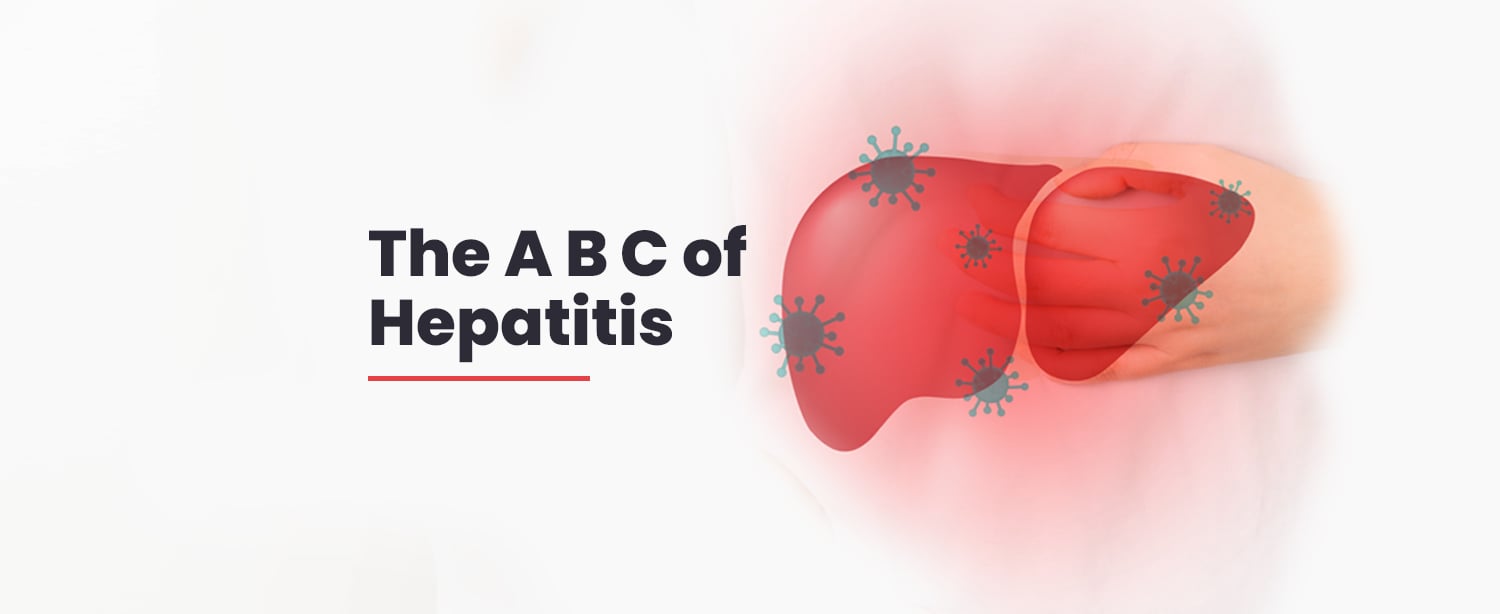Worldwide, around 300 million people are living with viral hepatitis without even knowing that they are infected with the Hepatitis virus. With a person dying every 30 seconds from a hepatitis related illness – the time to spread awareness and take action is now. The theme for World Hepatitis Day this year is ‘Hepatitis can’t wait’. It will highlight the need to step up the fight against viral hepatitis and the significance of screening and care for those who truly require it. The most common types of viral hepatitis are hepatitis A, hepatitis B and hepatitis C.
What is Hepatitis?
Your liver – the largest organ in your body – aids in the digestion, energy storage, and toxin removal of your food. However, hepatitis, a viral illness, can impair these vital processes and endanger your health. Some hepatitis infections are acute or only last a short time. Others may be chronic or long-lasting and result in liver failure, cancer, or even death. Therefore, it is important to understand how hepatitis is spread, detected, and treated as well as how to prevent infections. Here is everything you need to know about hepatitis:
Hepatitis A
Hepatitis A is mainly transmitted through ingestion of contaminated food or water or through contact with an infectious person. Maintain high levels of personal hygiene to stay protected. Hepatitis A is usually spread through:
- Household contact with an infected person
- Sexual contact with an infected person
- Consumption of contaminated food or water
- Touching contaminated surfaces
Healthy people with a good immunity recover from hepatitis A without specific treatment after a few weeks.
Hepatitis B
Unlike hepatitis A, hepatitis B can be a chronic infection for some people. It may also lead to liver cirrhosis and liver cancer if left untreated. Hepatitis B is usually spread through:
- Mother to child during childbirth
- Sex with an infected partner
- Sharing needles or syringes
- Sharing personal items with a patient
When an individual’s immune system is capable of fighting the virus, acute hepatitis B typically doesn’t require treatment. While there is no cure for chronic hepatitis B drugs taken orally or intravenously can decrease the disease’s progression or stop further liver problems.
Hepatitis C
Hepatitis C spreads mostly through the use of shared needles and syringes through the blood of an infected individual. Nearly 75 to 85 percent of those who have hepatitis C go on to develop a chronic infection, which can lead to serious health issues or even death. Hepatitis C is usually spread through:
- Sharing intravenous drugs
- Sharing tattoo or piecing tools
- Unsafe blood transfusions
- Unprotected sex
- Pregnancy and birth
If hepatitis C has caused liver damage, you must seek specialist care for further treatment like surgery, transplant, etc.
Hepatitis D
This condition is rarely seen and affects only those infected with hepatitis B. Hepatitis D is spread through contact with infected blood or other fluids, the same ways as hepatitis B. Hepatitis D can be acute or chronic and if left untreated may lead to cirrhosis, liver failure and liver cancer.
Hepatitis E
This is spread through water supplies contaminated by an infected person’s stool. Most instances of hepatitis E are acute, and patients tend to get better without treatment after a few weeks. However in rare cases, hepatitis E can become chronic for people with a low immunity.
Preventive measures against Hepatitis
As with many diseases, stopping the spread of hepatitis begins with good hygiene habits. Other preventive measures include:
- Vaccinate against Hepatitis B
- Avoid sharing of needles or syringes
- Drink boiled water
- Eat healthy foods
- Practice safe sex
- Don’t share personal items
Treatment at Kokilaben Dhirubhai Ambani Hospital
Have you been experiencing common hepatitis symptoms that include fever, jaundice, loss of appetite, nausea, abdominal pain, dark urine or light-colored stools? Get your liver checked by our hepatologists. Experts at our Department of Hepato Pancreato Biliary are trained to diagnose, manage and treat all forms of hepatitis with the best possible outcomes. For further information, please visit the below website link: https://www.kokilabenhospital.com/departments/clinicaldepartments/hepatopancreatobiliary.html


